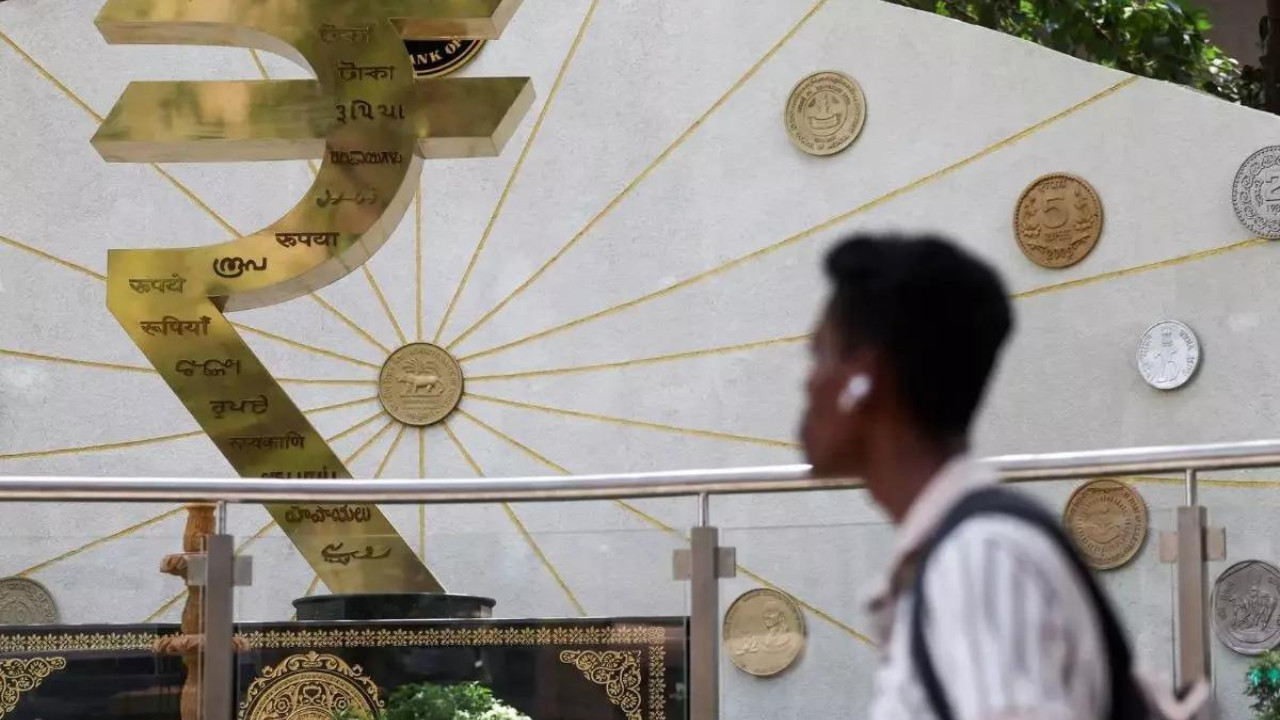The Indian rupee weakened to 86.34 against the US dollar due to rising crude oil prices and geopolitical tensions in the Middle East. A stronger dollar and subdued domestic equities further pressured the rupee. Despite bearish cues, foreign institutional investors were net buyers, purchasing equities worth Rs 1,482.77 crore.
Okay, here’s a blog post based on the provided news article, aiming for a conversational, engaging tone with a subtle touch of analysis:
Rupee Wobbles: What’s Oil, Geopolitics, and Your Wallet Got to Do With It?
Okay, let’s talk rupees. Specifically, the slipping rupee. You might have noticed the news flashing across your screen: the Indian currency took a bit of a tumble recently, dipping to around 86.34 against the US dollar. A 30-paise drop might not sound like the end of the world, but in the complex world of international finance, it’s a signal – a red flag, perhaps, hinting at underlying pressures.
So, what’s causing this little wobble? Well, like most things in economics, it’s a tangled web of factors, but two big ones are shouting the loudest: oil prices and global instability.
Let’s start with the black gold. India, as you probably know, is a massive importer of crude oil. We’re talking about a huge chunk of our import bill. When global oil prices spike – which they’ve been doing lately – it puts a serious strain on the rupee. Think of it this way: we need more rupees to buy the same amount of oil. This increased demand for dollars to pay for those imports naturally weakens our own currency. And when the rupee weakens, imported goods become more expensive, potentially fueling inflation down the line. See the ripple effect?
Now, why are oil prices playing hopscotch? Geopolitical tensions are a major culprit. The world feels… well, unsettled. Regions are facing conflicts. This instability sends shivers down the spines of investors, driving them towards safe-haven assets like the US dollar, creating even more upward pressure on it and downward pressure on currencies like the rupee. It’s a classic flight-to-safety scenario. Basically, when things get dicey, everyone wants to hold dollars.
But it’s not just oil and geopolitics. The Indian stock market, the Sensex and Nifty, also played a role. The article mentioned weak equity markets, and that’s significant. Foreign investors, often quick to react to market sentiment, might pull out their investments when they see red on the screens. This outflow of capital adds to the rupee’s woes. It’s like a double whammy: higher demand for dollars to buy oil and increased demand as investors cash out.
So, what does all this mean for you and me? In the short term, you might see slightly higher prices for imported goods. That fancy gadget you’ve been eyeing? It might get a little pricier. The cost of traveling abroad? Possibly a bit steeper.
But let’s not panic just yet. Currency fluctuations are a normal part of the global economic dance. The Reserve Bank of India (RBI), our central bank, usually steps in to manage these fluctuations. They have tools at their disposal, like intervening in the currency market by selling dollars (which increases the supply of dollars and reduces the pressure on the rupee) or adjusting interest rates to attract foreign investment. The RBI, undoubtedly, will be watching these developments closely. It has already shown intent.
And frankly, a little bit of rupee depreciation isn’t necessarily a bad thing. It can make our exports more competitive, which can boost our economy in the long run. It’s all about finding the right balance.
The Bigger Picture
What’s truly important here is the underlying strength of the Indian economy. Are we resilient? Are we diversified enough to weather these storms? These are the questions we need to be asking. While the immediate impact of a weaker rupee might be felt in our wallets, the long-term consequences depend on how effectively we manage our economy and navigate the choppy waters of global finance.
For the average person, knowledge is power. Understanding these economic currents empowers you to make informed decisions, whether it’s about your investments, your spending habits, or simply your understanding of the world around you. So, stay informed, stay curious, and don’t let the headlines scare you too much. This economic saga is a marathon, not a sprint.
*







